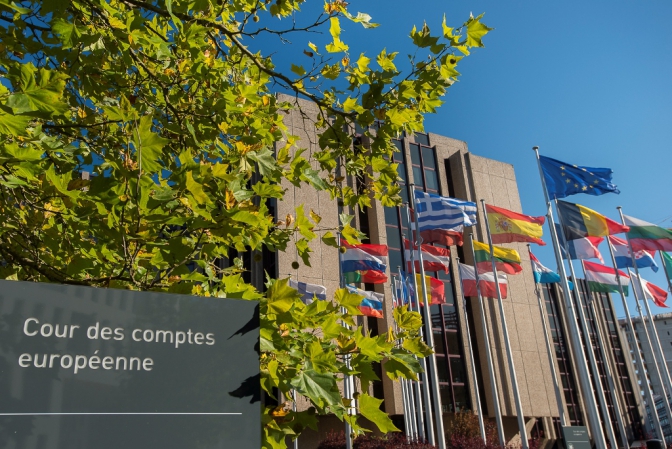The EU’s main COVID-19 recovery fund suffers from an internal design flaw which does not assure that the money spent by the member states comply with EU and national rules, according to a special audit report published on Wednesday by the European Court of Auditors (ECA).
The recovery and resilience facility (RRF), altogether €724 billion in loans (€386 billion) and grants (€338 billion), aims at accelerating member states’ economic recovery from the consequences of the pandemic and making them more resilient.
Normally, EU budget expenditure is based on the reimbursement of actual costs and compliance with procurement and eligibility conditions. Under the RRF, an off-budget instrument, member states receive funds in exchange for achieving predefined milestones and targets. The facility supports reforms and investment projects from February 2020 until end December 2026.
“Citizens will only trust new ways of EU funding if they can be sure that their money is being spent properly,” said ECA President Tony Murphy. “Currently, there is a gap in terms of the assurance the Commission can provide for the EU’s main pandemic recovery fund and a lack of accountability at EU level.”
An Irish national and auditor, he took up his duties on 1 October 2022 as the new President of the European watch dog.
At a virtual press briefing (8 March), he expressed serious concerns about the Commission’s lack of verified information through its own work as to whether and how the national checks are carried out by the member states. Without assurance that these rules are complied with, there is a lack of accountability at EU level, he asserted.
In particular, he warned against the risk of irregularities and errors in the RRF spending, something which is relatively common in the EU budget. As previously reported, in its annual report of the EU 2021 accounts, ECA found that nearly two thirds of the audited expenditure (63.2 %) was considered high-risk, with an estimated error rate of 4.7 %.
In fact, ECA covered for the first time the RRF in its annual report in October 2022 but its observations came too late for addressing the weaknesses in the design in the RRF and in the payment requests from the member states.
In designing the RRF in an emergency situation, the EU apparently prioritized speed and effectiveness and did not address the issue of backsliding in the milestones and targets. The Commission has not yet issued any guidance with a clear methodology what to do in this not unlikely situation. How much money should be frozen or reduced if a country fails to fully deliver on a target or milestone?
Until now, the uptake of the money has been relatively slow. The money which already has been disbursed to only 11 member states, besides pre-financing, amounts to 20 % of the total RRF funding, following desk checks of their national plans and not checks of any actual transactions.
The gap between ECA and the Commission
The RRF regulation places the main responsibility on the member states for the protection of the financial interests of the EU as they are the beneficiaries and borrowers of the funds under the facility (article 22). They are required to provide an “effective and efficient internal control system and the recovery of amounts wrongly paid or incorrectly used”.
In doing this, the member states are supposed to use their regular national budget management systems and apply the same checks and control as they do in funding under the EU budget (e.g., the structural funds).
The Commission regards this a direct management while ECA president Murphy described it as a form of “hybrid” shared management. Without assurance that both EU and national rules are complied with, there is a lack of accountability at EU level, he explained.
A Commission spokesperson commented that the Commission strongly disagrees with this conclusion. The spokesperson was of the opinion that the findings in the audit report were overall positive. Notably, ECA concluded that “in a relatively short time, the Commission has designed a control system that provides for an extensive process for verifying the fulfilment of milestones and targets.”
According to the Commission, the control framework foreseen in the RRF, a performance-based EU spending programme, will ensure that EU funds are not misspent.
To date, the Commission has conducted 19 system audits to confirm member states’ control systems are up to the task.
“This is unfortunately not reflected in the Court’s report which only looked at information available up to April 2022,” the spokesperson remarked. “This means that the court’s report only looked at the early application of the RRF control system and does not reflect all the work done by the Commission over the past year.”
The fact that the Commission does not see eye to eye with ECA on its main message probably already indicates a perception gap between them. According to the auditors, the Commission’s control system has not changed since April 2022. The Commission does not seem to be keen on examining how the member states in practice check that RRF funded investments comply with EU and national rules.
Luckily, ECA has full rights to audit the RRF and plans in the future to look at EU countries’ RRF checks. It also consults regularly with the national audit offices in the member states. For the time being, ECA is sure that the they will do their job in auditing the RRF and the management and control systems – otherwise they will lose the trust of the citizens.
M. Apelblat
The Brussels Times

